My Road Scholar adventure to Bermuda began with a one-day layover in one of my favorite places: New York City. I have a long list of stuff I want to do in New York and try to cross a few things off each time I have a chance.
After riding the E Train to the World Trade Center I visited the 9/11 Memorial. Oculus, the new Calatrava-designed transit station that replaces the one destroyed on 9/11, looks from the outside like a whale skeleton or an eagle flying, depending on your perspective. There is still a lot of construction going on in the area, much of it decorated with street art. Brownstone Ocean, the mural above, was done by a Brooklyn artist who calls himself Hydeon.
The main part of the memorial is the two waterfall pools built in the footprints of the North and South Towers. Behind the north pool you can see the 9/11 museum. Around the edges of the pools are etched the names of all the people who died in the Towers, the Pentagon, and the hijacked planes. I haven’t been to lower Manhattan since early 2002, when those of us who came to pay our respects waited in line to be allowed out on the plywood viewing platform. A lot has changed since then!
An old friend used to call the High Line “a little bit of Portland in New York City.” This walking trail was made from an abandoned freight railroad that parallels 10th Avenue on the west side of Manhattan. When it first opened I had walked the southern end up to Chelsea Market in the Meatpacking District, but now it is open all the way to 34th St. It’s a great place to enjoy art and nature as well as exercise. The skyscrapers in the background are part of the new Hudson Yards development at the end of the High Line. The projection on the top of the skyscraper is the newest observation deck for views of the Manhattan skyline. You can still see the rusty old tracks, in contrast with the unusual new architecture of Hudson Yards.
Here are some of the interesting art installations along the trail. You can also catch glimpses of the original Hudson Yards–the actual railroad yards that run underneath all the new development, near Penn Station.
If the High Line is a little bit of Portland, then Hudson Yards could be called “a little bit of LA.” It’s not terribly popular with New Yorkers, and it’s easy to see that it’s very different from its surroundings–big upscale shopping malls are not really a New York thing–but it sits at the north end of the High Line and I decided to walk through and enjoy the unusual architecture on the way to catch the subway back to my hotel. The two main attractions are the Shed and the Vessel. The Shed is the one that looks like a quilted jacket. It’s a gallery and entertainment venue. Not exactly sure what the Vessel is supposed to be but it’s fun to look at. The copper face does a great job of reflecting its surroundings. You can climb to the top and I did see some people peering down from there.
No trip to New York is complete without a Broadway show. After entering every lottery and charity auction for the past few years, I decided to give up trying to win one and just buy a ticket to see Hamilton. Absolutely worth every penny. Photos are obviously not allowed but I snuck a quick one of the set before the show. If you have not seen this I wholeheartedly recommend it. The lyrics and music and staging are all just amazing. It won lots and lots of Tony awards–I hope one of them was for the lighting, which is fantastic. If you can’t see the live show, there will be a movie coming out next year…with the original Broadway cast!
Next morning I flew to Bermuda. Originally my friend and traveling pal Maggie and I were scheduled to attend a Road Scholar program at the Chicago Jewish Film Festival during this time, but it was canceled because not enough people signed up. Maggie, who has been almost everywhere, is very good at finding out-of-the-way places–I knew nothing about Bermuda and would have never thought to go there. I love to sit and look at the ocean, so the Grotto Bay Beach Resort looked like the perfect spot. We got to know our fellow travelers over the first of many excellent meals, and settled into our rooms.
Next morning our program started with an introduction to Bermuda’s history and a visit to the historic town of St. George, settled in 1612. We started out learning about the many misconceptions people have, such as that Bermuda is in the Caribbean (it’s in the Atlantic) and that it’s a British colony –sort of–it’s actually a British Overseas Territory, and it’s self-governing, to a point. When it comes to things like foreign policy, the Governor (appointed by the Queen) has veto power. But, if you’re thinking that they wear Bermuda shorts…you’re absolutely right! Our local guide Peter demonstrates the official garb, though in the evening he adds a suit jacket.
In the center above is a replica of the Sea Venture, an English ship that was headed to rescue the colonists at Jamestown, VA when it was caught in a hurricane and wrecked on the coral reef surrounding Bermuda. Later, when they realized what a disaster Jamestown was turning out to be, some of them returned to Bermuda to stay. Other than some Spanish and Portuguese explorers who made quick stops here but didn’t stay, those were the first people to settle the islands. By the way, the title of this post comes from the “unofficial” national anthem, “Bermuda is Another World” by Hubert Smith.
Walking up the hill above the Town Hall we visited the old Statehouse and Somers Park, named after Sir George Somers, the admiral who directed the Virginia Company fleet of which the Sea Venture was a part. Somers is considered the founder of Bermuda, which was once known as the Somers Isles. At upper right is a typical Bermuda stone house.
The “moongate” in Somers Park was designed by a sea captain who had visited China, and they have become popular in Bermuda and are found in many parks and gardens. Winding up the hills we saw the famous St. Peters Church. The ruin is an old family home that fell into disrepair during a family fight over its inheritance. The island is much hillier than I expected, but it’s not too surprising considering it was created originally by an undersea volcano, then built up with limestone in successive stages of dune and sediment layers, depending on the rising and falling sea level.
Graves of the earliest settlers are found here in the churchyard, as well as some of Bermuda’s few indigenous plants. On the right is a Bermuda cedar, which is actually not a cedar but a juniper. Lots of older houses are built of Bermuda cedar, as well as furniture. The plaque identifies a separate graveyard where enslaved people and free blacks were buried. There were no indigenous people here when the British arrived, but they quickly began to bring in slaves, mostly from the Caribbean but a few directly from Africa. These were used in unsuccessful attempts to grow tobacco, sugar, and other cash crops that failed to thrive in the sandy soil. When slavery ended in 1834 many stayed, and today make up around half of the population.
This plaque near St. Peter’s church commemorates a Methodist minister who was jailed for preaching what the Church of England considered heresy. He continued to preach from his jail cell through this window. The inside of the church shows the Bermuda Cedar structure and pews. At bottom right, a sign advertises the upcoming celebration of the settlement’s 400th anniversary. They invited the Queen, though she is unlikely to show up, but they’re hoping Prince Charles will make it.
After exploring the town awhile, we headed back to the hotel for lunch. On the right you can see St. George’s main street–notice the cars drive on the left! Lower right is the old stocks that were used to punish prisoners in the town square.
After lunch we crossed the road from our hotel to the Walsingham Nature Preserve. The palmetto, another of the indigenous plants, is easily recognizable by the bright yellow blaze at the base of each leaf. Here you can still see what Bermuda must have looked like to the first settlers–heavily forested with Bermuda cedar and palmetto, with secluded beaches, and ancient limestone riddled with caves.
Here is one of the many limestone caves…there are even a few on the grounds of our hotel. In the pond, top right, the water is roiling because the tide is coming in. There are no freshwater ponds, lakes or rivers on Bermuda, which is the main reason the water has that gorgeous turquoise color like the Caribbean–no sediment to muddy the water. Tom Moore’s tavern is in a 17th century house. At the bottom is one of the multicolored parrot fish that frequent these waters.
Friday morning we set off for Hamilton, the “big city” of Bermuda. The group of islands that make up Bermuda sit in a fish-hook shaped formation, about 26 miles long. St. George is on the northeast corner, and Hamilton is about halfway to the west. It’s only about a 12-mile drive but Bermuda keeps a relaxing pace with a national speed limit of 20 miles an hour. There are basically three roads, the North Road, the South Road, and…of course, the Middle Road. There is one short stretch of 4-lane “highway,” which was supposed to alleviate the rush hour traffic–Hamilton has only about 1000 residents, but 14,000 come to work here every day in industries like tourism, banking, and reinsurance. The building on the left is painted to resemble Bermuda’s flag, which is red and has the Union Jack in the upper left corner and the rather complicated Bermuda coat of arms (let’s just say that shipwrecks are involved). The other photo is the main commercial street of Hamilton, showing the pastel colors that are commonly used.
The Bermuda Historical Society museum was closed when we arrived, but fortunately our group leader, Tim Rogers, is on the board, and has a key, so we got a private tour. Some of the things that interested me most were the display of wood carvings done by prisoners kept here by the British during the Boer War in South Africa. There were also some photos and information about some of the prominent black Bermudians, such as Dr. Edgar Gordon, a physician and activist from Trinidad who fought for civil rights and labor rights. I should have taken a video of the clock on the right–the musicians mark the seconds by strumming and bowing their instruments.
From the museum we strolled through the Queen’s Park and over to City Hall. The postcard mural is part of the Greetings Tour, and you may have seen similar ones in San Diego, Austin, and other US cities.
Some more Hamilton History–the memorial above showing people with protest signs honors events that happened in 1959 when a group of black students who had been away at college for a few years returned to find they were not allowed to enter the movie theater or bar in Hamilton. They organized a boycott and within two weeks they ended segregation in Hamilton! The city coat of arms at the right refers to Hamilton’s history–it was chosen to be the capital because it was more centrally located than St. George and seemed a good spot to keep an eye on the pirates who thrived in Bermuda.
Up the hill from city hall is the neogothic Cathedral of the Most Holy Trinity. It’s built primarily with Bermuda limestone. This is an Anglican cathedral that was built in the 19th century to replace an older church that burned in an apparent arson.
Steve was our knowledgeable and friendly guide to Hamilton’s Botanical Society gardens. He showed us some native plants and other introduced species. The top tree is a kapok tree, an Asian variety whose seeds contain a fluffy cottony substance that was once used to stuff pillows and life preservers. There were lots of banyans and other ficus varieties. The scary looking thorny tree on the right is called the Monkey’s Dinner Bell because when its fruits ripen they explode and the monkeys hear the noise and come running.
Plants have been brought to Bermuda by humans, birds, wind and ocean currents. Hydrangeas seem to thrive here, as well as the red-leaf croton. In the lower right is a poinsettia.
Some other things that caught my eye at the Botanical Society–I love the moose dressed as a tourist with his Bermuda shorts and camera! The truck driver, who stopped to say hello to Steve, seems to carry a mascot with him. The bronze sculpture commemorates a visit by John Lennon.
Saturday the group saw some more gardens, but all the walking in New York and the hills of Bermuda were bothering my knee, so I took the day off and hung around the hotel. I explored the beach and views of the turquoise water, and checked out one of the limestone caves that was right down the hill from my room. We were supposed to go on a boat ride tonight with BIOS, the Bermuda Institute of Oceanographic Studies, but the wind was too high and they postponed that trip until Tuesday.

Larry was our speaker Sunday morning, and one of my favorite Bermudians. He works as a mason, but really he is a bit of an archaelogist, specializing in taking apart 400-year-old buildings to see how they were constructed. We will see one of his projects a bit later.
After Larry’s talk, we headed out to Warwick Long Bay, one of Bermuda’s famous pink sand beaches. It doesn’t look pink from a distance but when you get up close you can see the tiny chips of foraminifera, a microscopic organism with a reddish pink shell. The cottage below shows some of the building techniques we learned about from Larry.

The early settlers built wooden houses because they had no way to cut the stone, but once they developed a stone-cutting process, especially one that could slice thin slabs of limestone, they switched to stone houses. Notice the stepped roofs–basically limestone shingles, that are whitewashed with a lime coating that purifies the rainwater as it falls on the roof, rolls down the gutters and into the storage tank. The early settlers probably collected fresh water by digging a hole in the ground for rainwater–this way is much easier and more efficient. The disadvantage of the white lime paint is that it shows the dirt and has to be repainted every few years. Now Bermuda is famous for their pastel painted buildings–an idea suggested by immigrants from the Azores and Caribbean.
Next day started with a visit to the Dockyards, a former Royal British Navy base. Many of the old buildings are museums, shops and restaurants. The Cooperage, where we ate lunch at the Frog and Onion pub, was where they made and stored barrels for shipping. The building with the corbel arches had ammunition storage. And the Commissioner’s House, on top of the hill, is a museum of Bermudian History. Behind Tim is a great example of the ancient dune formations, when sea level dropped and the limestone was blown by the wind at an angle instead of being deposited in flat layers under water.
We walked up the hill to see the museum, stopping to gawk at the ocean view. My favorite displays include a sculpture by Bill Ming called Family Circle, an homage to his African heritage; a couple of rooms describing interesting parts of Bermuda history, including their role in the “triangle trade,” and another showing immigration from Portugal and the Azores islands; and Graham Foster’s mural, in the main stairwell. The mural took 3 1/2 years to complete and shows Bermuda’s story from the wreck of the Sea Venture to the present day.
Mark Twain spent lots of time in Bermuda and wrote about it in “Innocents Abroad.” His famous quote, shown at the museum: “You can go to Heaven if you want, I’d rather stay here.” After lunch and shopping at the Dockyards we took the public ferry home for dinner.
Our next day was action packed. We started with a talk about politics with Randy Horton, a former speaker of the Parliament for the Progressive Labor Party. He has a bachelor’s degree from Oxford and did graduate studies at Rutgers and George Washington U. He described the evolution of voting rights in Bermuda from the time when only white male property owners could vote. Later we visited the elegant Verdmont estate, built around 1710 and now owned by the National Trust of Bermuda. The building at center right was the slave quarters and is now rented out as a private home. The view from the front door is pretty impressive!
We ate lunch at a waterside restaurant belonging to BUEI, the Bermuda Underwater Exploration Institute. After lunch Hannah took us on a tour of their museum. She is one of several brilliant young women we met who are doing great work on oceanography and sea life. Here we looked at the old school diving suits that weighed a ton, in contrast to the new state of the art suit that has wifi and bluetooth and enough oxygen for several days! Hannah was very well informed about ocean conditions and the problem of plastic trash that stays in the ocean virtually forever.
My favorite part of this museum was the magnificent shell collection. The one on the left is a type of scallop and on the right is a red abalone.
The map above gives you an idea of Bermuda’s geography–the islands are the green formation, and the yellow outline shows the coral reef surrounding the islands. The museum has a special Bermuda Triangle exhibit–we entered a large elevator door to a room where we sat on bleachers and watched a video describing our voyage to the Bermuda Triangle–then the video stopped and said we should exit out the door where we came in–except the door wouldn’t open! It only took about 10 minutes for the museum staff to rescue us, but for a while there, we thought we might be the latest victims to disappear in the Bermuda Triangle!
Our last full day in Bermuda started with a trip to Cooper’s Island, another place of beautiful beaches and some historic interest. The US military used it as a storage base during WWII and NASA built a tracking site there, including an alternative splashdown site in case of bad weather elsewhere. The lighthouse is located on nearby St. David’s Island. The flower is called a “false poinsettia,” which is kind of funny –Bermuda has a “cedar” tree that isn’t really a cedar, and an “olivewood” tree that isn’t actually an olive. But this actually is a poinsettia! It’s just a variety where only the center portion of the leaves turn red.
Of course the island has plenty of beautiful beaches–here’s one that is being visited by large numbers of Portuguese Man o’ War, a species of jellyfish. Tim is showing us the purple sea snail, which feeds on the Man o’ War and gets its color from it.
Here are two great examples of the original and later Bermuda architecture. The stone house was built 100 years after the old wooden houses. Although this particular cottage is a replica of the original palmetto-thatched cottage made of Bermuda Cedar. It was built by our friend Larry.
That night we finally got our BIOS adventure that was canceled a few nights ago. Kyla and Hannah (a different Hannah) showed us an excellent presentation about their research with plankton, and the vital role they play in the ocean food cycle. I wimped out and stayed in the lab while the others went out on a small boat to tow conical nets that trap the plankton (I’m not a big fan of boats, but I am sorry to have missed the photoluminescence that happens when the plankton are disturbed). The “tow” has to be done at night because the plankton hide at lower depths in the daytime. Then Kyla poured us each a petrie dish of plankton-rich sea water to examine under the microscope. It was pretty amazing to see the number and variety of creatures in that small amount of water. What I hadn’t realized is that plankton is not a particular species, but any sea creature that’s unable to move against a current. The name comes from a Greek word meaning “wanderer” or “drifter.” The many different kinds include both plants (phytoplankton) and animals (zooplankton).
There was a full moon on our last night and a beautiful sunrise on the morning of our departure. It was hard to say good by to this fascinating country, and to a wonderful group of travelers.





















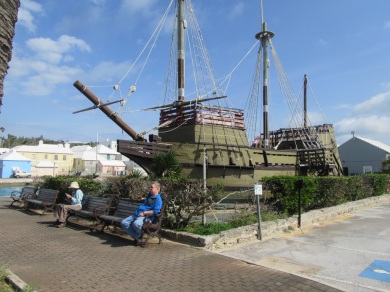










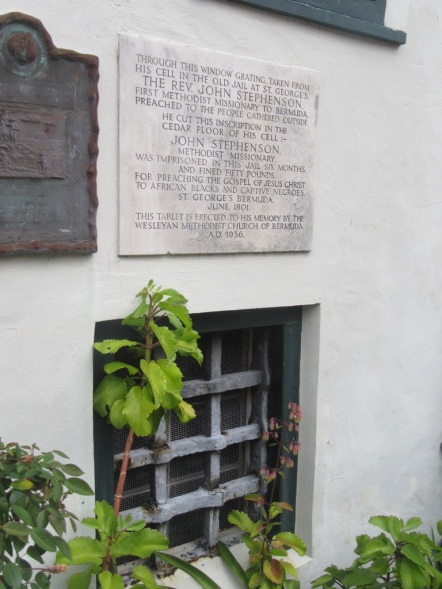



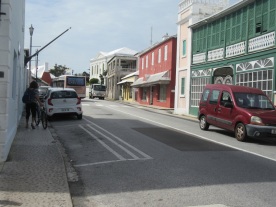















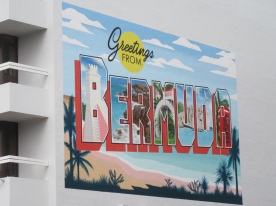












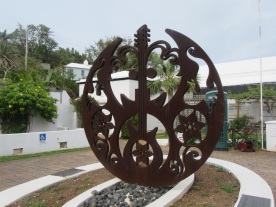





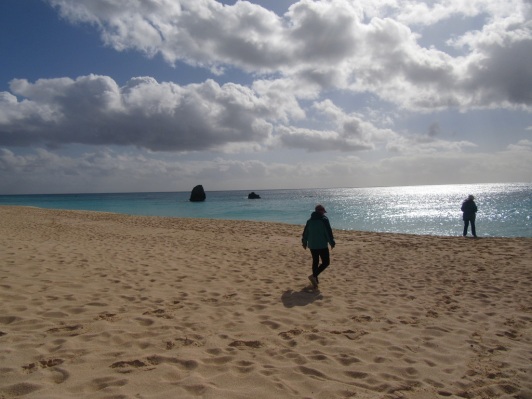









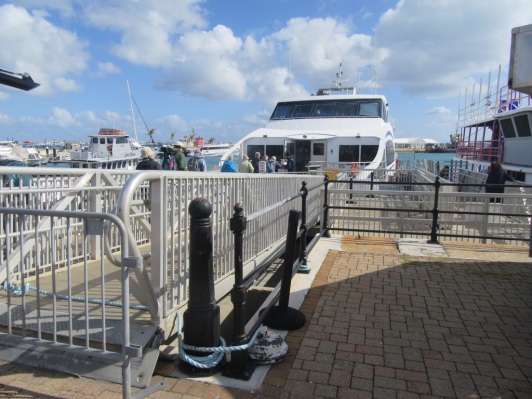



















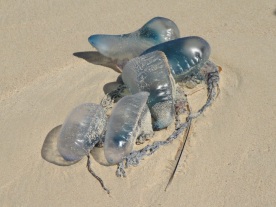






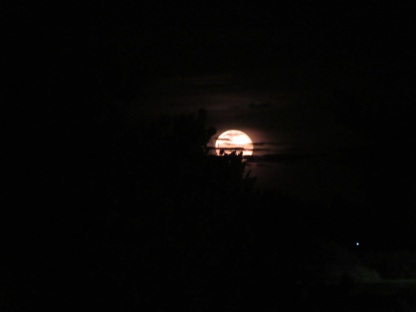

Oh Andrea, what a great blog! I re-lived our trip through your pictures and notations on daily field trips. You really listened a lot better than me, you got a lot of great detail that I wouldn’t have remembered. Thank you!
Kit
LikeLike
Thanks Kit! 😍
LikeLiked by 1 person
Great narrative, Lady. Til you got to the Man of War, I was ready to buy a ticket. And yes, I know I last played in much more dangerous waters. We all have our hangups. Thanks. Again.
LikeLiked by 1 person
Luckily the Man o’ War is a seasonal thing. They die and wash up on the beach. You just have to try not to step on their tentacles!
LikeLike
Andrea, I love Bermuda! Thank you for your blog! Sandy
LikeLiked by 1 person